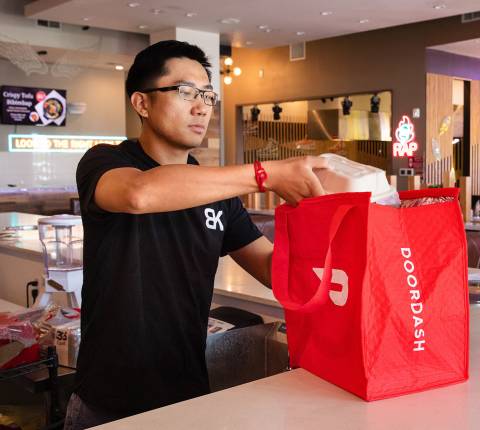Starting a restaurant is exciting, but it can also be overwhelming. As a business owner, you’re responsible for managing many moving parts, from real estate to business plans to staffing and beyond — and you may find yourself wondering where to even begin.
Looking to optimize the process for starting a restaurant? Here, we’ve compiled some of our top tips into a new restaurant checklist. You’ll learn how to:
Conduct market research that uncovers valuable customer insights.
Choose a creative restaurant concept that’s right for your target audience.
Craft a well-written business plan that attracts investors.
It’s time to bring your vision of starting a restaurant to life. Use this checklist for opening a restaurant to simplify the launch for you and your team.
Starting a restaurant with the right mindset
If you’re a first-time restaurant owner, some of your most valuable lessons will be learned on the job. While preparing for long hours and hard work is always a good idea, you can expect to pick up tricks of the trade related to streamlining operations, managing supply chain logistics, improving customer service, and more.
If this isn't your first rodeo, take a moment to reflect on what you’ve learned so far. What’s been successful, and what mistakes would you like to avoid making in the future? Even experienced owners and managers with many restaurant openings under their belts will need a resilient mindset to navigate the challenges of starting a restaurant.
6 steps in a new restaurant checklist
Still trying to answer the question, “How do I start a restaurant?” There are several steps in the process — and they all tie together to create a successful opening. Rather than seeing this opening a restaurant checklist as a sequence, it’s better to think of it as a cycle which you will continuously review and revise as you gather information about operating costs, suppliers, and staff.
1. Choose your location
First things first, you’ll want to select a restaurant location. As they say, location is everything — and this certainly rings true in the restaurant business. Ask yourself: What kind of community do I want my restaurant to be in? What other businesses are already nearby, and what’s missing? Are the locals in this neighborhood my target customers?
Once you’ve set your sights on a specific location, more questions will start to arise. For example, if you’re launching in a desirable downtown area with particularly high rent, how will you set menu prices to ensure profitability? Additionally, do you have the necessary licenses and permits to operate in that location? You will likely need authorization to run a restaurant in your chosen facility — as well as health and safety approvals, permission to sell alcohol, and other region-specific certifications.
Another factor to consider is ease of access and parking. Are you aiming to attract foot traffic in a busy neighborhood, or will your restaurant be a destination that diners drive to? This may seem like a lot to think through up front, but putting in the work now will create a solid foundation that can serve your restaurant for years to come.
2. Research your market
After choosing your restaurant location, conduct detailed market research to learn more about the community and determine what kind of business would thrive with locals. For example, you may learn that your neighborhood is home to many Southern transplants who miss authentic barbecue — which could inspire a winning restaurant concept. Uncovering customer insights will help ensure your offerings are as relevant as to your target audience as possible.
3. Build your restaurant brand
With thorough research under your belt, you can start to develop your own original restaurant concept. Consider important details like the restaurant’s level of formality (ranging from fast casual to fine dining), what type of cuisine you’ll serve, and what your mission will be. Once you’ve chosen a concept, begin building a brand based on your restaurant's theme.
4. Write your business plan
Once you’ve developed a compelling restaurant concept, it’s time to create your business plan. Your restaurant business plan will pull together all of the information from the previous steps and show investors you have a clear, viable blueprint for your restaurant’s brand, finances, and customer base. Read on to see a breakdown of considerations you should include in your own plan.
5. Secure financing
Opening a restaurant requires steep startup costs, and many restaurateurs seek outside funding in the form of a bank loan or through partnerships with investors. If you're going the investor route, start thinking about your ideal investor and how you can share your story and restaurant plan in a concise and compelling way. Your passion will show investors that you’re the right person to bring your vision to life and inspire them to take part in the restaurant’s success. Next, create a restaurant pitch deck to encapsulate this investor profile and your go-to elevator pitch.
Wondering how to find restaurant investors? Your own network of family, friends, and colleagues is a natural place to start. But even if you don’t have many investors in your personal sphere, there are still plenty of options. Try connecting with fellow restaurant owners who can share a few helpful pointers on securing financing, or even introduce you to their investors. You can also go the online route by conducting outreach to potential investors on LinkedIn, or launching a crowdfunding campaign.
6. Hire your team
You can't run a restaurant without a great team behind you. As you start the hiring process, be sure to note the current state of the labor market. Hiring during a labor shortage is challenging, so it’s important to tailor your approach to candidates’ needs. See if you can promise candidates a more attractive employee experience — from showing your appreciation through retention bonuses to providing healthcare benefits and professional development opportunities. By shaping a restaurant culture that values all team members, you can attract top candidates and increase their likelihood of staying by your side for years to come — a must in a tight labor market.
How to create a strong business plan
If you’re seeking financing for your restaurant, a well-written business plan will be a crucial part of your loan application or investor pitch. Loan officers and investors will want to see that you’ve accounted for all overhead and operating expenses and thoroughly researched your market, allowing for accurate projections.
If you're just starting a restaurant business plan, make sure to include the following components:
Concept details: First, write a description of the brand as well as a sample menu.
Staffing information: Second, provide information about staffing, including the service staff, management staff, and other essential team members such as interior designers, accountants, and lawyers.
Market analysis: Next, describe your target market as well as the general market conditions in your local region. Include a marketing and publicity plan, as well.
Financial planning: Finally, create a thorough outline of your restaurant’s business structure and finances. It may be helpful to bring on an accountant and lawyer to ensure your business plan makes sense.
Put your restaurant checklist to the test
Opening a new restaurant is a lot of work — but with the right mindset, a unique restaurant concept, and a strong business plan, you can confidently start down the path to success. Just remember to follow this opening a restaurant checklist and surround yourself with the right team to support your journey. When you put all of these steps together and do your due diligence, the result will be a solid business plan that provides a stable foundation for your new business.
Setting off on a new business venture? If you’re starting a restaurant, use this restaurant business plan template to develop your own roadmap for growth.





